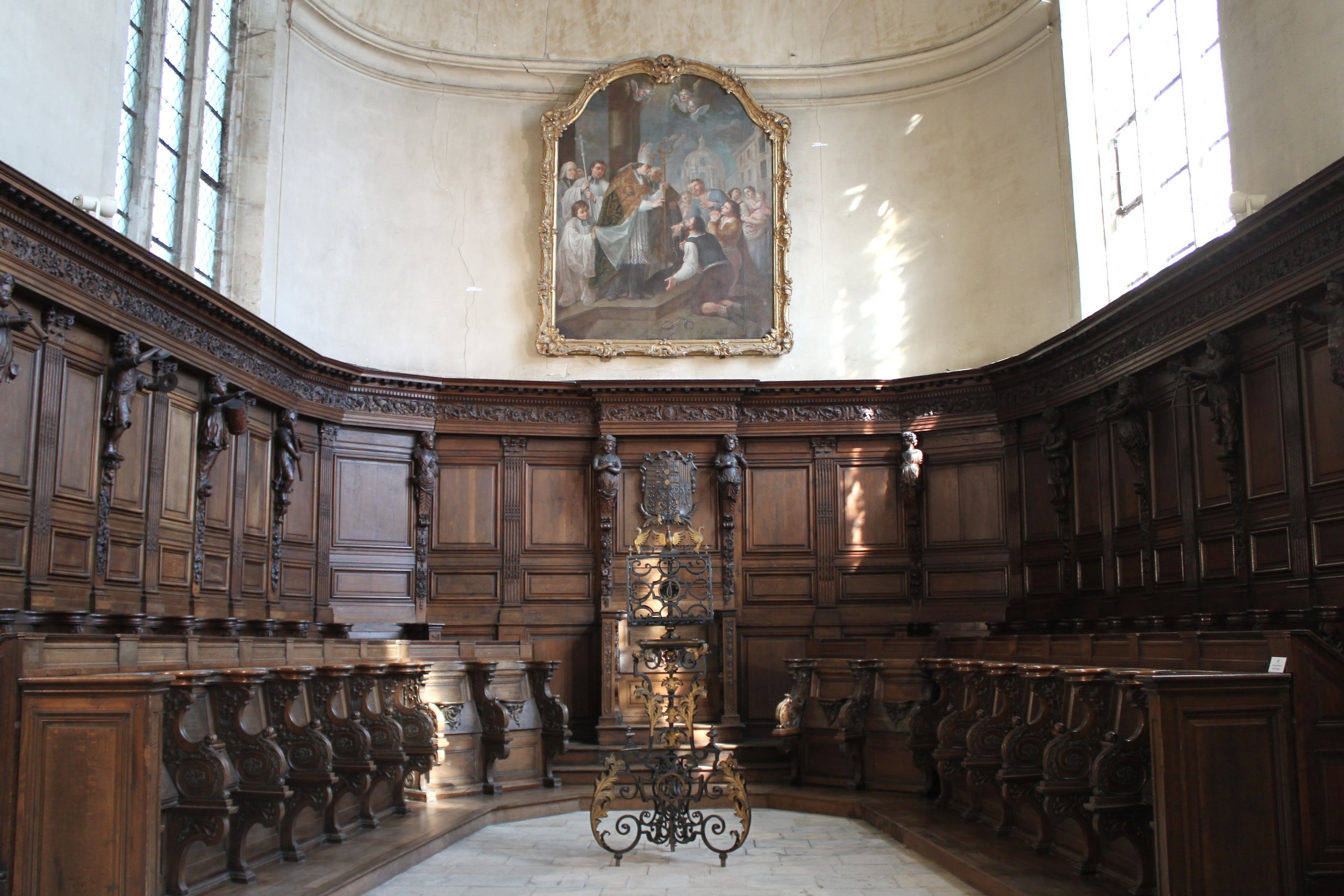NANCY MUST SEES
Now I did break the cardinal rule of visiting places in France, and that rule is not to attempt to do anything on a Sunday. This is because the majority of shops are not open on Sundays, and if a business is indeed open, it could be seen as something geared more towards tourists. However, I found plenty to enjoy on a sunny Sunday in Nancy, a city in France’s Grand Est region, and would like to share them with you!
Place Stanislas
Place Stanislas is named after Stanislaw, who built this square to honor his son in law, Louis XV. City Hall, the Lorraine Opera, the Fine Arts Museum, and more (including terrace cafés) are here to greet you. This square is actually the first thing I came upon when walking from the train station, and I was utterly delighted! As soon as I passed through the gilded wrought-iron gates made by Jean Lamour, saw the ornate lampposts and fountains, and witnessed young and old alike sitting on café chairs and benches, I thought I could spend the rest of the day here and would be thoroughly entertained!
Place Stanislas
Place de la Carrière
While many associate Nancy with Place Stanislas, there is another lovely square not to be forgotten, and that is Place de la Carrière! “Carrière,” or training ring/riding arena in English, is an appropriate name for this area, as it was once used in the Middle Ages to train horses, to joust, and to host tournaments. After you walk the long path flanked by manicured trees on either side, you will be face to face with the gorgeous Palais du Gouvernement building, thus concluding your time in Place de la Carrière.
Palais du Gouvernement, seen from Place de la Carrière
Arc Héré
If you visit both Place Stanislas and Place de la Carrière, you will probably walk underneath this arch without even giving it a second thought, but Arc Héré is worth noting and admiring! This monument was the brainchild of Stanislaw to once again honor his son in law King Louis XV. The arch was designed by architect Emmanuel Héré, and it is here where the structure takes its name. Fun fact: one side is dedicated to peace, while the other is dedicated to war.
Arc Héré
Porte de la Craffe
This gate was once used as part of the city’s defense and then became a prison until the 19th century. It is open and free to walk through 24/7!
Porte de la Craffe
Basilica of Saint Epvre
Compared to Porte de la Craffe which was built in the 14th century, the Basilica of Saint Epvre of Nancy is quite new in comparison, having been opened in the 19th century. Seek refuge in this gothic revival where you can take in the lovely stained-glass windows.
Basilica of Saint Epvre
Church of the Cordeliers of Nancy
While this church does not seem as grand as the Basilica of Saint Epvre, I found this Roman Catholic church to boast a generous amount of light coming through the windows and an impressive long nave. The church is part church and part museum, as the church no longer conducts regular services and is more so a place to display artifacts from the Dukes of Lorraine.
Church of the Cordeliers of Nancy
Musée de l’École de Nancy (School of Nancy Museum)
In 1901, Émile Gallé, Victor Prouvé, Louis Majorelle, Antonin Daum, and Eugène Vallin founded an Art Nouveau movement in the city of Nancy called l’École de Nancy (or School of Nancy) – and people took notice! Many of Nancy’s wealthy residents commissioned houses that were designed in this style, and as you walk around the city, you will be able to spot these by their floral and leaf motifs. One of these houses belonged to Eugène Corbin, a lover of the École de Nancy artwork. It is his house that now holds the Musée de l’École de Nancy, or the School of Nancy Museum! If you love Art Nouveau, absolutely check out this stunning museum, as well as the gardens of the property.
Musée de l’École de Nancy






